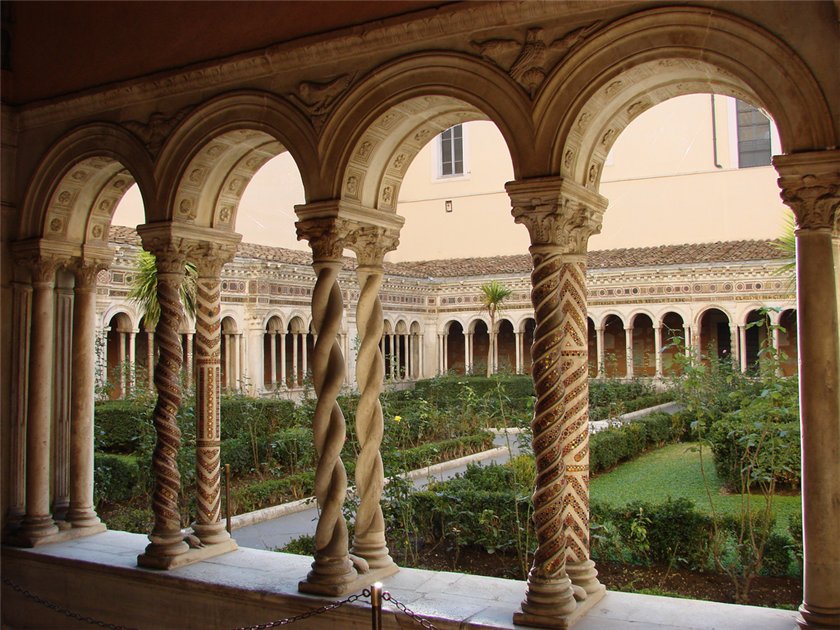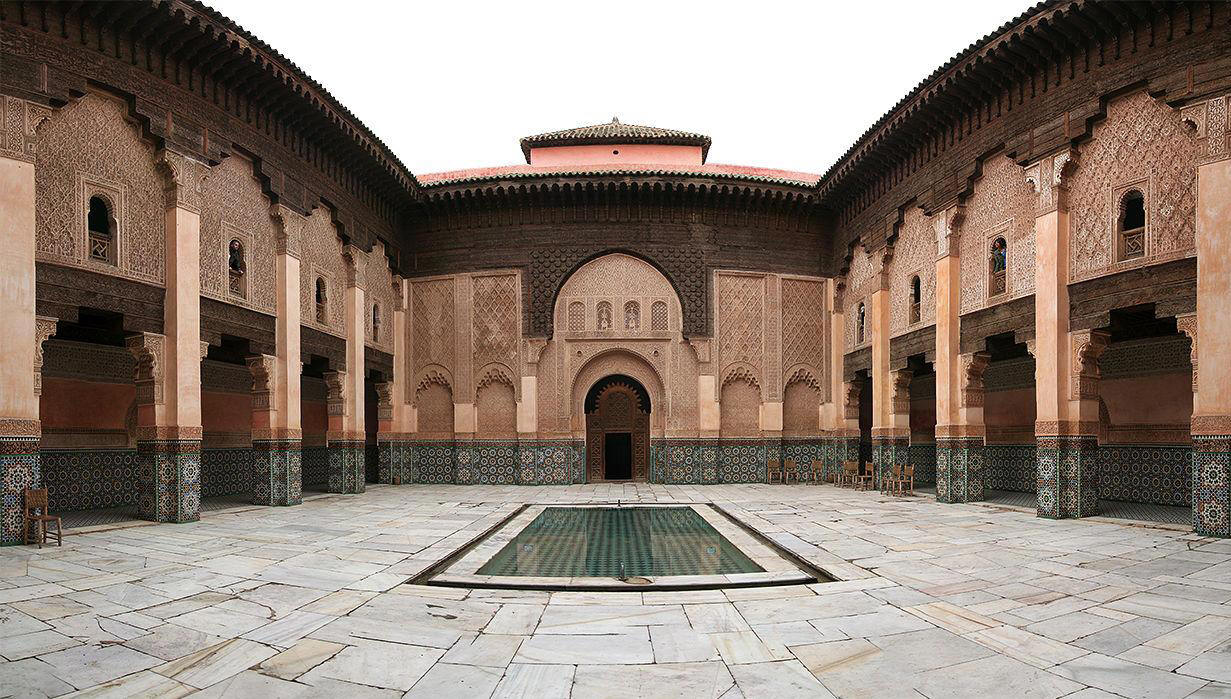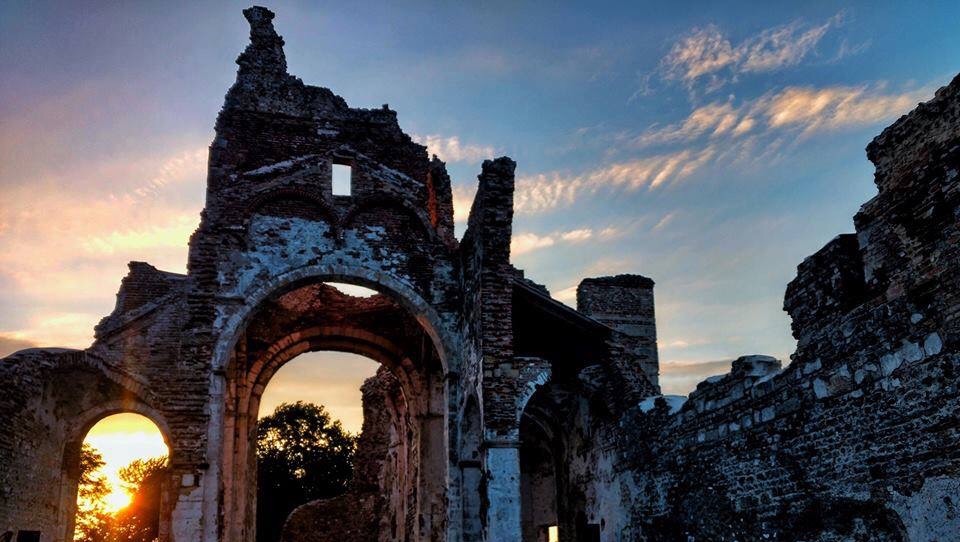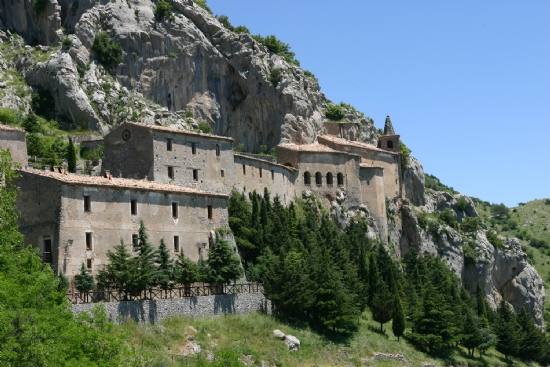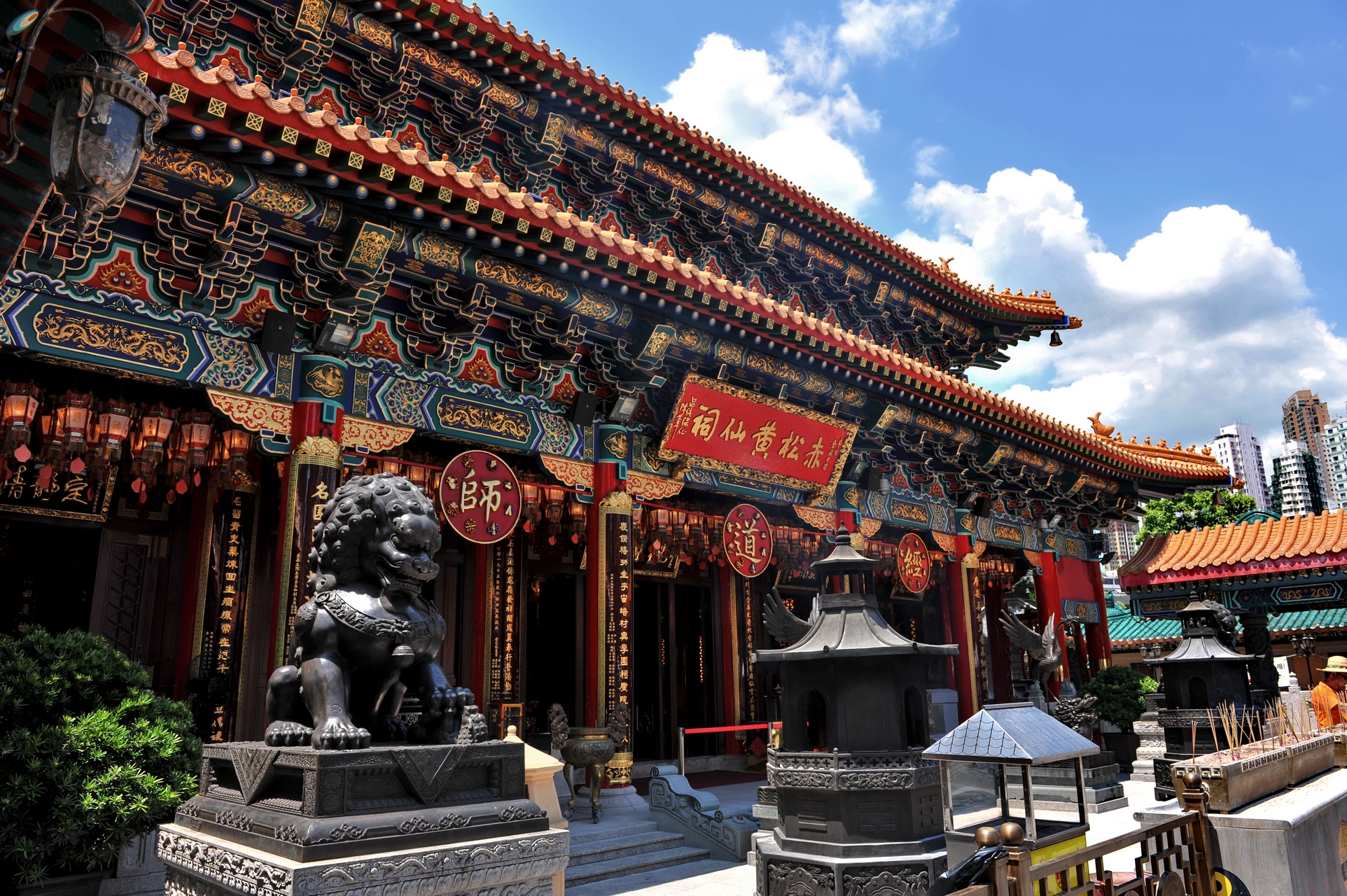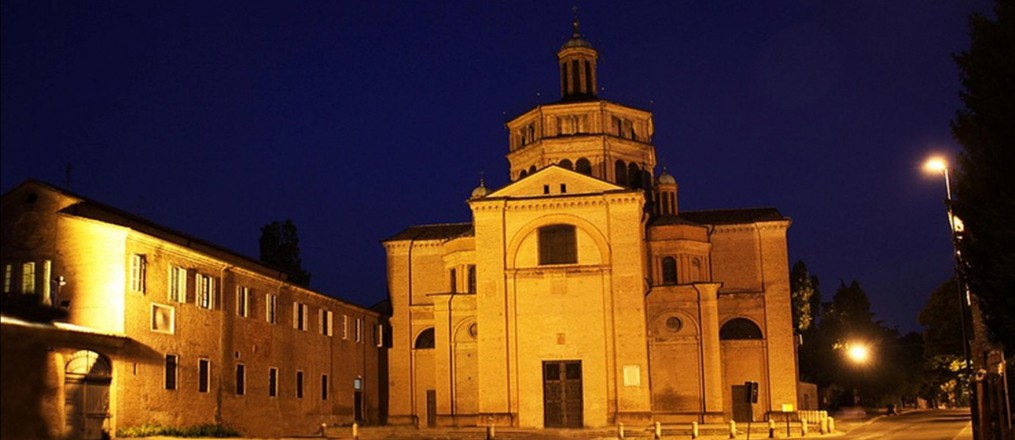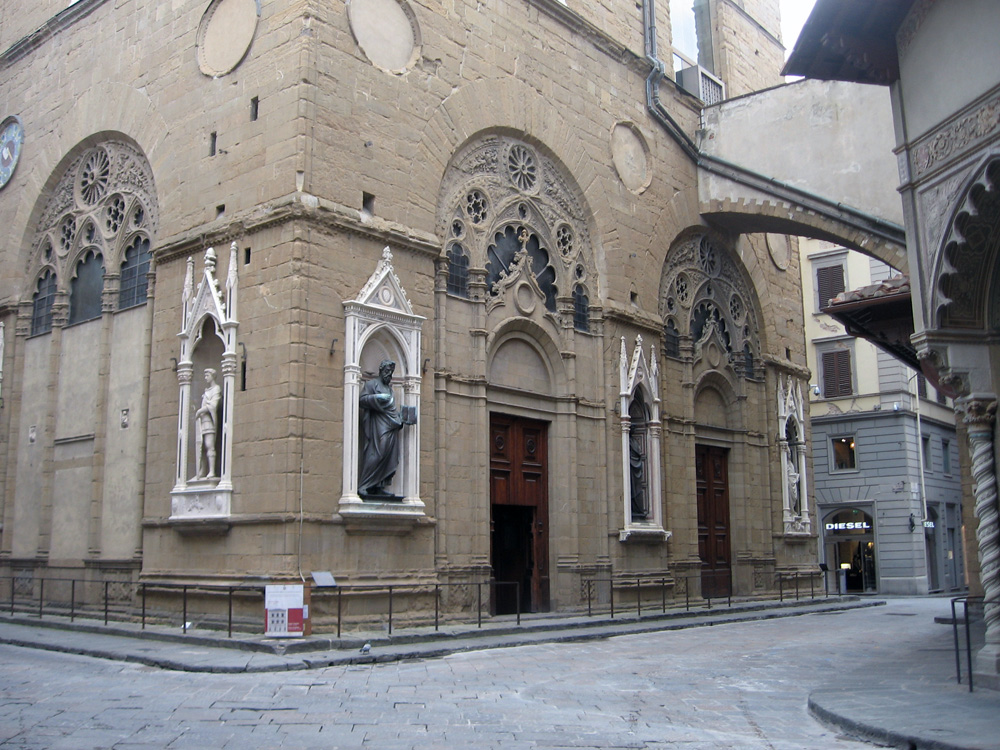At the beginning of the 4th century, with the end of the persecutions and the promulgation of the Edicts of Tolerance in favour of Christianity, Emperor Constantine ordered the excavation of the cella memoriae, the place where Christians venerated the memory of Saint Paul the Apostle, beheaded under Nero around 65-67 A.D. Above his grave, located along the Ostiense Way, about two kilometers outside the Aurelian Walls surrounding Rome, Constantine built a Basilica which was consecrated by Pope Sylvester in 324.
Between 384 and 395 the Basilica, under the emperors Theodosius, Valentinian II and Arcadius, was restored and enlarged according to an extensive project consisting of five naves opening out into an atrium (quadriportico), or courtyard with four rows of columns. Throughout the centuries the Basilica would not cease to be embellished and enhanced by the Popes. For example, the massive defensive wall was built to protect against invasions at the end of the ninth century, while the bell tower and the magnificent Byzantine door were constructed in the eleventh century. Other important additions include Pietro Cavallini’s mosaics in the façade, the beautiful Vassalletto family’s cloister, Arnolfo di Cambio’s celebrated Gothic baldachin and the Candelabrum for the Paschal candle attributed to Nicola d’Angelo and Pietro Vassalletto of the thirteenth century. This historical period represents the golden age of what had been the biggest Basilica of Rome, until the consecration of the new Basilica of St. Peter in 1626. This sacred place of Christian pilgrimage was well-known for its artistic works.
On the night of July 15, 1823, a fire destroyed this unique testimony to the Paleo-Christian, Byzantine, Renaissance and Baroque periods. The Basilica was reconstructed identically to what it had been before, utilizing all the elements which had survived the fire. In 1840 Pope Gregory XVI consecrated the Altar of the Confession and the Transept.
Other embellishments followed the reconstruction. In 1928 the portico with 150 columns was added. Contemporary work in the Basilica has uncovered the tomb of the Apostle, while other important and beneficial works are carried out, as in the past, thanks to the generosity of Christians from all over the world.
In the fifth century under the Pontificate of Leo the Great, the Basilica became the home of a long series of medallions which would to this day depict all the popes throughout history. This testifies, in an extraordinary way, to “the very great, the very ancient and universally known Church founded and organized at Rome by the two most glorious Apostles, Peter and Paul” (Saint Irenaeus, Adversus Haereses 3, 3,2).
Saint Paul Outside-the-Walls constitutes an extra-territorial complex (Motu Proprio by Pope Benedict XVI, 30 May 2005), administered by an Archpriest.
In addition to the Papal Basilica, the entire complex includes a very ancient Benedictine Abbey, restored by Odon of Cluny in 936. This Abbey remains active even today under the direction of its Abbot who retains his ordinary jurisdiction intra septa monasterii. The Benedictine Monks of the ancient Abbey, founded near the tomb of the Apostle by Pope Gregory II (715-731), attend to the ministry of Reconciliation (or Penance) and the promotion of special ecumenical events.
It is in this Basilica that every year on the feast of the Conversion of Saint Paul, January 25, the Week of Prayer for Christian Unity solemnly opens. The Pope has specified two privileged tasks for this Papal Basilica: the Sacrament of Reconciliation (or Penance) and the development and organization of ecumenical initiatives.
On June 28, 2007, Pope Benedict XVI visited the Basilica and announced that the following year would be designated the “Pauline Year” to commemorate the bimillennium of the birth of Saint Paul. Thus, the “Pauline Year” was run from June 28, 2008 to June 29, 2009.
THE TOMB OF THE APOSTLE
In 61 A.D. Paul arrived in Rome to undergo judgment. Here he was beheaded between 65 and 67 A.D. His body was buried two miles away from the place of his martyrdom, in the sepulchral area along the Ostiense Way, owned by a devout Christian woman named Lucina, which was part of a pre-existent burial place. Even though he was a Christian, it was possible to bury the Apostle Paul in a Roman necropolis, due to his Roman citizenship. Shortly thereafter, his tomb would become a place of worship and veneration. Upon it was erected a cella memoriae or tropaeum, namely a memorial, where during the first centuries of persecution many of the faithful and pilgrims would go to pray, drawing the strength necessary to carry out the work of evangelization of this great missionary.
THE MARBLE TOMBSTONE
At 1.37 meters below the present Papal Altar lies a marble tombstone (2.12 m. x 1.27 m.), bearing the Latin inscription PAULO APOSTOLO MART (Apostle Paul, martyr)… It is composed of various pieces. On the piece where PAULO is written there are three holes, a round and two square ones.
THE SARCOPHAGUS
It is above a massive sarcophagus, measuring 2.55 meters long, 1.25 meters wide and 0.97 high, that the “Altars of Confession” were later placed. During recent work in the Basilica, a large window-like opening was made just below the Papal Altar, in order to allow the faithful to see the Apostle’s tomb.
THE CONSTANTINE BUILDING
The Emperor Constantine, who reigned from 306 A.D. to 332 A.D., ended the persecutions of Christians, by proclaiming the Edict of Milan in 313 A.D., which established freedom of worship. It favours the construction of places of Christian worship, especially that commemorating the Apostle.
He ordered the erection of a place of worship above his tomb [1]. One might think that this first building was very small because probably, prior to its construction, there lied the structure of a domus ecclesiae, that is a domestic church. On November 18, 324 A.D. the Basilica was consecrated by Pope Sylvester I (314 A.D. – 335 A.D.).
After the important restoration work of 2006, one can notice by observing the ground that the apse was oriented eastward following the custom of the times.
The magnificent Basilica of the Three Emperors
In 395 it was consecrated by Pope Silicius (384-399).
In order to enlarge the Basilica, by that time too small for the continuous influx of pilgrims, it became necessary to change its orientation, from East to West.
The style of its structure was Byzantine, measuring 131,66 meters long, 65 meters wide and 30 meters high.
It was built according to a design which specified five naves (a large central nave 29,70 meters long, flanked by four lateral naves) all sustained by a so-called “forest” of 80 monolithic columns made of granite and its quadriportico (70 meters long), that is, a courtyard with four rows of columns. It had been the largest Roman Basilica until the re-construction of St. Peter’s.
Witnessing to the Church’s love for this place, throughout the following centuries the Popes would not cease to restore and embellish it by adding frescoes, mosaics, paintings and chapels.
In only one night, the Basilica was destroyed by fire.
A significant appeal was launched by Pope Leo XII to all the faithful: the Basilica had to be rebuilt in an identical way, re-using the elements preserved from the fire, in such a manner that the Christian tradition could be maintained as it had been since its origins.
Parts were moved, restored, demolished, and reconstructed[2]. Not only did a multitude of Catholics respond to the appeal, but gifts arrived from all over the world. For example, blocks of malachite and lapis lazuli were donated by Tsar Nicholas I. These were going to be used for the construction of the two sumptuous lateral altars of the transept. King Fouad I of Egypt gave columns and windows of very fine alabaster as a gift, while the vice-king of Egypt, Mohamed Ali contributed by offering columns made of alabaster.
